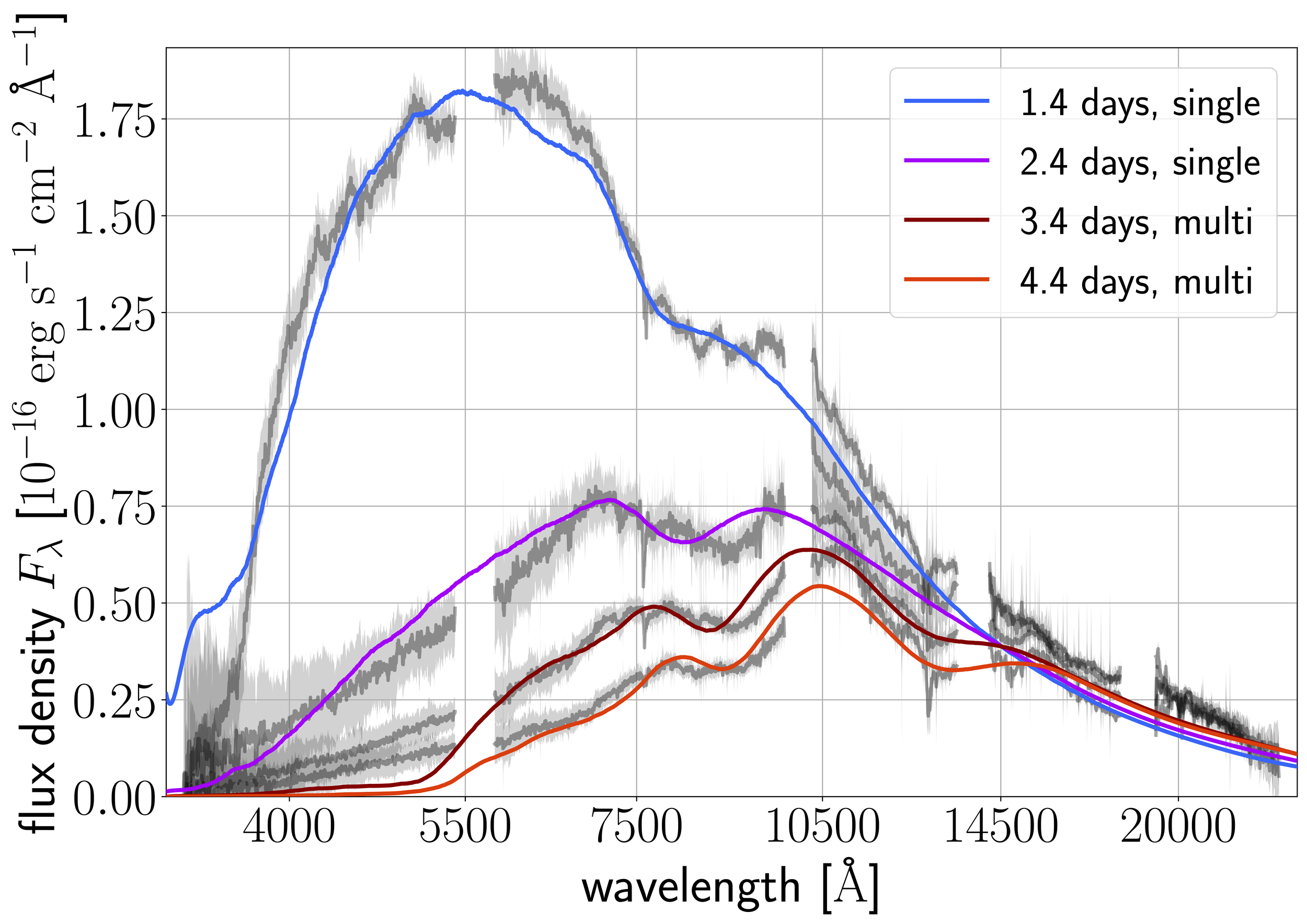Kilonova Spectral r-Process Abundance Retrieval
What is the origin of the heaviest elements in the Universe?
The cosmic alchemy of producing the heaviest elements towards the bottom of the periodic table remains mysterious. The 2017 breakthrough discovery of the first binary neutron star merger GW170817 through gravitational waves and its kilonova counterpart through telescope observations finally confirmed that these violent merger are at least one site of heavy element production through rapid neutron capture. The smoking-gun evidence for r-process nucleosynthesis was provided by optical and infrared spectra (see Figure below), which displayed striking absorption features that encode the combined opacities of billions of blended absorption lines from different heavy elements synthesized in the ejecta. However, understanding the extent to which binary neutron star mergers are responsible for producing the heaviest elements requires us to know how much of each element is produced in these mergers. What is the abundance pattern of r-process elements produced in this binary neutron star merger?
The observed optical/infrared spectrum of GW17017 at 1.4, 2.4, 3.4, and 4.4 days post-merger (black). The blackbody continuum has broad absorption features due to the opacity of freshly-synthesized r-process elements in the kilonova ejecta. We fit the observed spectra to synthetic spectra from radiative transfer simulations of kilonova ejecta, to infer the abundance pattern of r-process elements produced in this merger (Vieira et al., 2023).
Image credit: Nicholas Vieira
My research group is currently undertaking the challenge of performing the first Bayesian inference on kilonova spectra. We compare the observed spectra of GW170817 to synthetic kilonova spectra, generated by inputting line lists and abundance patterns from nuclear network calculations into radiative transfer simulations of kilonova ejecta. To overcome the challenge of tacking this inverse problem with a computationally-expensive likelihood, we are employing recent advances at the intersection of machine learning and Bayesian inference. The resultant inferred r-process abundance pattern displays similarities to that of Milky Way halo stars, suggesting that binary neutron star mergers may indeed be cosmic origin of the heaviest elements.
Students: Nicholas Vieira, Nicole Ford, Rebecca Hamel
Publications:
’Spectroscopic r-Process Abundance Retrieval for Kilonovae I: The Inferred Abundance Pattern of Early Emission from GW170817’, Vieira, Ruan, et al. (2023), The Astrophysical Journal, 944, 123
’Spectroscopic r-Process Abundance Retrieval for Kilonovae II: Lanthanides in the Inferred Abundance Patterns of Multi-Component Ejecta from the GW170817 Kilonova’, Vieira, Ruan, et al. (2024), The Astrophysical Journal, 962, 33
’Spectroscopic r-Process Abundance Retrieval for Kilonovae III: Self-Consistent Spectral and Light Curve Modeling of the GW170817 Kilonova’, Vieira, Ruan, et al. (2025), submitted to The Astrophysical Journal (arXiv:2504.10696)
’KilonovAE: Exploring Kilonova Spectral Features with Autoencoders’, Vieira, Ford, Ruan, et al. (2024), The Astrophysical Journal, 961, 119
